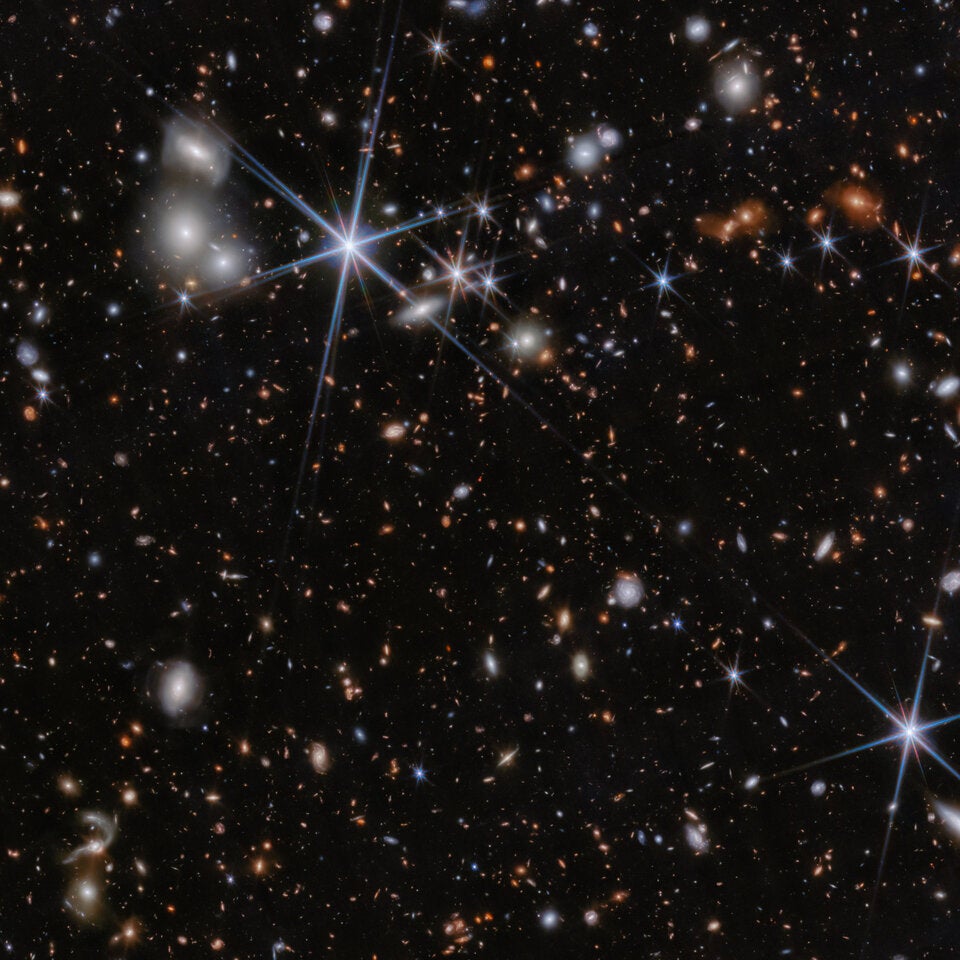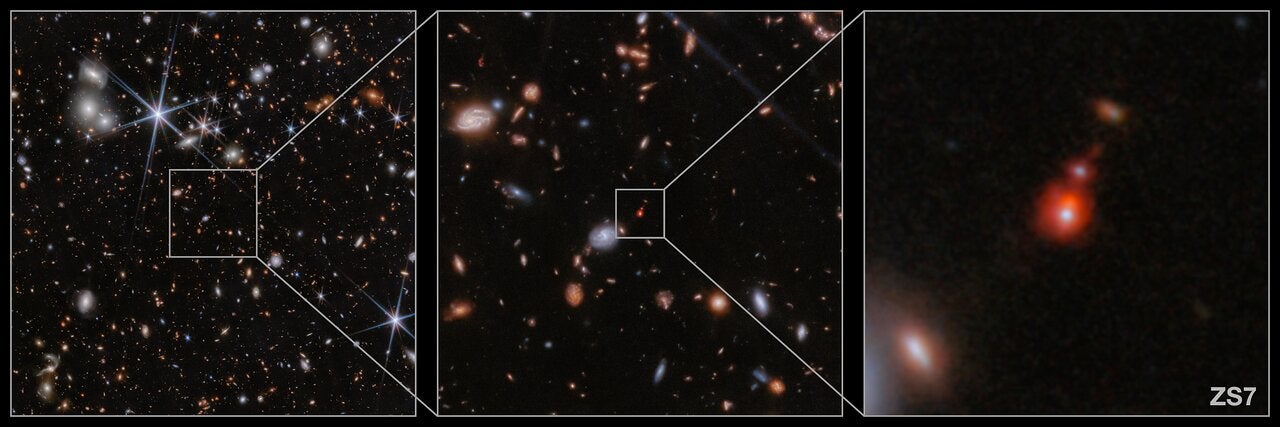Astronomers have used the Webb observations to provide evidence for an ongoing merger of two galaxies and their massive black holes when the universe was just 740 million years old.

The merging galaxy system ZS7 was found in this field of galaxies observed by the James Webb Space Telescope. Credit: ESA/Webb, NASA, CSA, J. Dunlop, H. Übler, R. Maiolino, et. al
The James Webb Space Telescope (JWST) has detected two galaxies and their supermassive central black holes caught in a merging dance when the universe was only 740 million years old. This makes the find the farthest — and earliest — detection of merging black holes.
The study builds off one the most important results so far from JWST — that galaxies acquire actively feeding black holes at their cores much earlier in the universe’s history than expected. The fact that JWST has now spotted a pair of black holes in the process of merging around the same point in cosmic history suggests that such events could be key to how black holes eventually reach such colossal sizes.
“Our findings suggest that merging is an important route through which black holes can rapidly grow, even at cosmic dawn,” said Hannah Übler, study lead author and astrophysicist at the University of Cambridge, U.K., in a press release. “Together with other Webb findings of active, massive black holes in the distant universe, our results also show that massive black holes have been shaping the evolution of galaxies from the very beginning.”
The findings were published today in Monthly Notices of the Royal Astronomical Society.
Massive voids

We know that black holes form when large stars die in supernova explosions. These resulting garden-variety black holes are typically only a few times more massive than our Sun. But the supermassive black holes at the cores of galaxies are millions or billions of times the mass of the Sun. How black holes grow from masses comparable to a single star into monsters billions of times more massive is not fully understood — but finding an example of black holes in the process of merging within the universe’s first billion years gives clues.
“How do giant black holes get to be so big? Is it through swallowing gas, or each other?” says astrophysicist and author Paul Sutter. “I’m excited by these results because they give us a window into this mysterious process.”
The new pair of black holes detected by JWST, dubbed ZS7, was found by the light the black holes create as they pull in material, heating it and accelerating it to high speeds. Using JWST’s near-infrared spectrograph, astronomers were able to clearly see this fast-moving gas via its Doppler shift and resolve the pair of black holes. JWST had previously found objects of a similar age considered to be candidates for merging black holes, but this result is the strongest evidence yet for a black hole merger this early in the universe.
One of the black holes has a mass 50 million times the mass of our Sun. The other black hole might also be around the same size, but it is harder to measure because it was surrounded by dense gas, said study co-author Robert Maiolino, also from the University of Cambridge, in the ESA press release.
Future gravitational waves
When the two black holes do merge, they will generate gravitational waves that would be strong enough to be detected by future missions, such as the ESA’s recently approved Laser Interferometer Space Antenna (LISA) mission. Consisting of a trio of spacecraft, LISA would be the first space-based observatory dedicated to studying gravitational waves.
The prospect of it being able to detect systems like ZS7 is enticing to researchers. “Webb’s results are telling us that lighter systems detectable by LISA should be far more frequent than previously assumed,” said LISA Lead Project Scientist Nora Luetzgendorf of the European Space Agency. “It will most likely make us adjust our models for LISA rates in this mass range. This is just the tip of the iceberg.”

